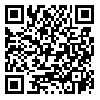Volume 3, Issue 1 (2 2005)
sjsph 2005, 3(1): 71-80 |
Back to browse issues page
Download citation:
BibTeX | RIS | EndNote | Medlars | ProCite | Reference Manager | RefWorks
Send citation to:



BibTeX | RIS | EndNote | Medlars | ProCite | Reference Manager | RefWorks
Send citation to:
Vaezi F, Pishrafti H. DESIGN CRITERIA FOR ULTRAVIOLT DISINFECTION OF WATER AND WASTEWATER. sjsph 2005; 3 (1) :71-80
URL: http://sjsph.tums.ac.ir/article-1-247-en.html
URL: http://sjsph.tums.ac.ir/article-1-247-en.html
Abstract: (10428 Views)
UV radiation is selected as the primary disinfection technology in numerous water and wastewater treatment plants of EU and North American countries having different ranges of capacities. It is expected that the method, often regarded as the best available technology, will replace chemical disinfection. As UV is claimed to be the only modality with no detrimental health effects for operators, consumers and the environment -even in high doses- it is important for directors of treatment plants to know how to apply new design criteria for UV to meet the different objectives of treatment.
The recent guidelines are based on testing the UV system at various hydraulic loading rates (expressed in liters per minute per UV lamp) . The rate that corresponds to the desired germicidal dose is used in the design of the system. Other design factors include water quality and characteristics of the lamp and quartz sleeves. According to this new approach, the lamp’s output is assumed to drop by 50% over its lifetime. Besides, sleeve fouling seems to reduce nominal UV light intensity by 20%.
This article describes the types of data that must be collected through pilot testing on the site of treatment plant it also shows how to use these data in the process of system design. The main advantage of this approach is that variability in the most important parameters is reflected in the design. In addition, it makes it possible to determine the number of lamps required in worst–case conditions and to meet the most stringent treatment standards.
| Rights and permissions | |
 |
This work is licensed under a Creative Commons Attribution-NonCommercial 4.0 International License. |





